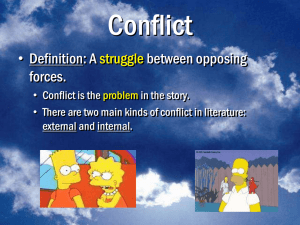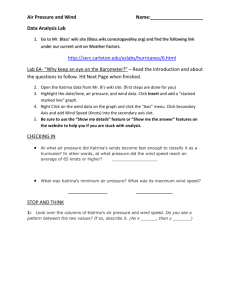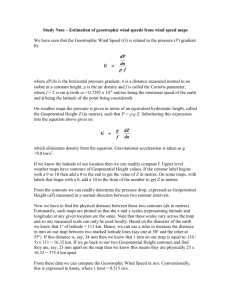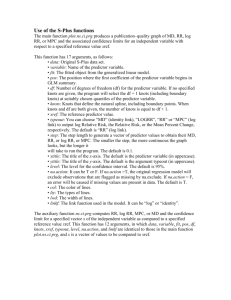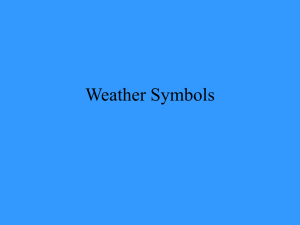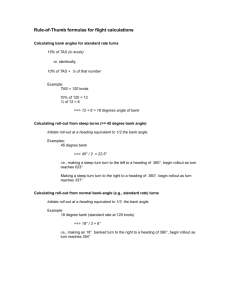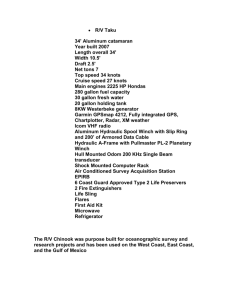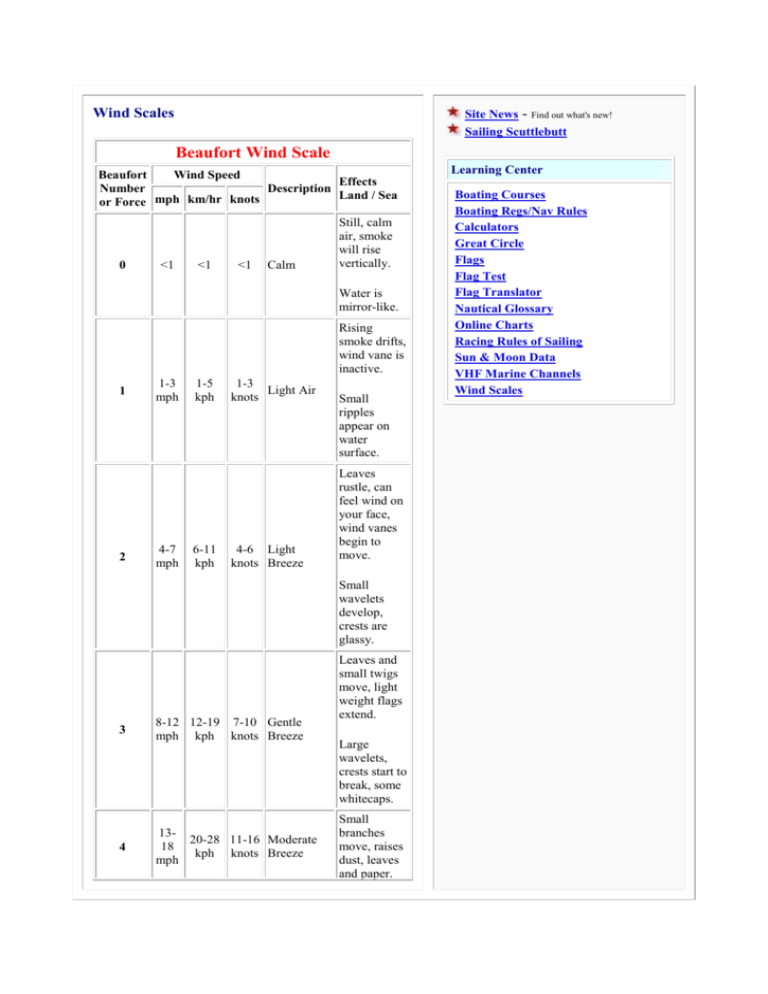
Wind Scales
Site News - Find out what's new!
Sailing Scuttlebutt
Beaufort Wind Scale
Beaufort
Wind Speed
Effects
Number
Description
Land / Sea
mph
km/hr
knots
or Force
0
<1
<1
<1
Calm
Still, calm
air, smoke
will rise
vertically.
Water is
mirror-like.
Rising
smoke drifts,
wind vane is
inactive.
1
2
1-3
mph
4-7
mph
1-5
kph
6-11
kph
1-3
Light Air
knots
4-6 Light
knots Breeze
Small
ripples
appear on
water
surface.
Leaves
rustle, can
feel wind on
your face,
wind vanes
begin to
move.
Small
wavelets
develop,
crests are
glassy.
3
4
8-12 12-19 7-10 Gentle
mph kph knots Breeze
1320-28 11-16 Moderate
18
kph knots Breeze
mph
Leaves and
small twigs
move, light
weight flags
extend.
Large
wavelets,
crests start to
break, some
whitecaps.
Small
branches
move, raises
dust, leaves
and paper.
Learning Center
Boating Courses
Boating Regs/Nav Rules
Calculators
Great Circle
Flags
Flag Test
Flag Translator
Nautical Glossary
Online Charts
Racing Rules of Sailing
Sun & Moon Data
VHF Marine Channels
Wind Scales
Small waves
develop,
becoming
longer,
whitecaps.
Small trees
sway.
5
6
1929-38 17-21 Fresh
24
kph knots Breeze
mph
2539-49 22-27 Strong
31
kph knots Breeze
mph
White
crested
wavelets
(whitecaps)
form, some
spray.
Large tree
branches
move,
telephone
wires begin
to "whistle",
umbrellas
are difficult
to keep
under
control.
Larger
waves form,
whitecaps
prevalent,
spray.
Large trees
sway,
becoming
difficult to
walk.
7
8
3250-61 28-33 Moderate or Larger
38
kph knots Near Gale waves
mph
develop,
white foam
from
breaking
waves
begins to be
blown.
3962-74 34-40 Gale or
46
kph knots Fresh Gale
mph
Twigs and
small
branches are
broken from
trees,
walking is
difficult.
Moderately
large waves
with blown
foam.
Slight
damage
occurs to
buildings,
shingles are
blown off of
roofs.
9
4775-88 41-47
54
Strong Gale
kph knots
High waves
mph
(6 meters),
rolling seas,
dense foam,
Blowing
spray
reduces
visibility.
Trees are
broken or
uprooted,
building
damage is
considerable.
10
5563
mph
89102
kph
48-55 Whole Gale Large waves
(6-9 meters),
knots or Storm
overhanging
crests, sea
becomes
white with
foam, heavy
rolling,
reduced
visibility.
Extensive
widespread
damage.
11
6472
mph
103117
kph
12
73+ 118+ 64+
Hurricane
mph kph knots
56-63 Violent
knots Storm
Large waves
(9-14
meters),
white foam,
visibility
further
reduced.
Extreme
destruction,
devastation.
Large waves
over 14
meters, air
filled with
foam, sea
white with
foam and
driving
spray, little
visibility.
Saffir-Simpson Hurricane Scale
Wind
Strength
Category
Effects
Pressure
65 to 83
knots
74 to 95
mph
119 to
153 kph
> 980
mb
Storm surge generally 4-5 ft above
normal. No real damage to building
structures. Damage primarily to
unanchored mobile homes, shrubbery,
and trees. Some damage to poorly
constructed signs. Also, some coastal
road flooding and minor pier damage.
Hurricanes Allison of 1995 and
Danny of 1997 were Category One
hurricanes at peak intensity.
2
84 to 95
knots
96 to
110 mph
154 to
177 kph
980 965 mb
Storm surge generally 6-8 feet above
normal. Some roofing material, door,
and window damage of buildings.
Considerable damage to shrubbery
and trees with some trees blown
down. Considerable damage to mobile
homes, poorly constructed signs, and
piers. Coastal and low-lying escape
routes flood 2-4 hours before arrival
of the hurricane center. Small craft in
unprotected anchorages break
moorings. Hurricane Bertha of 1996
was a Category Two hurricane when
it hit the North Carolina coast, while
Hurricane Marilyn of 1995 was a
Category Two Hurricane when it
passed through the Virgin Islands.
3
96 to
113
knots
111 to
130 mph
178 to
209 kph
Storm surge generally 9-12 ft above
normal. Some structural damage to
small residences and utility buildings
with a minor amount of curtainwall
failures. Damage to shrubbery and
trees with foliage blown off trees and
large tress blown down. Mobile
1
964 - homes and poorly constructed signs
945 mb are destroyed. Low-lying escape
routes are cut by rising water 3-5
hours before arrival of the hurricane
center. Flooding near the coast
destroys smaller structures with larger
structures damaged by battering of
floating debris. Terrain continuously
lower than 5 ft above mean sea level
may be flooded inland 8 miles (13
km) or more. Evacuation of low-lying
residences with several blocks of the
shoreline may be required. Hurricanes
Roxanne of 1995 and Fran of 1996
were Category Three hurricanes at
landfall on the Yucatan Peninsula of
Mexico and in North Carolina,
respectively.
4
Storm surge generally 13-18 ft above
normal. More extensive curtainwall
failures with some complete roof
structure failures on small residences.
Shrubs, trees, and all signs are blown
down. Complete destruction of mobile
114 to homes. Extensive damage to doors
134
and windows. Low-lying escape
knots routes may be cut by rising water 3-5
131 to hours before arrival of the hurricane
155 mph center. Major damage to lower floors
210 to of structures near the shore. Terrain
249 kph lower than 10 ft above sea level may
944- 920 be flooded requiring massive
mb
evacuation of residential areas as far
inland as 6 miles (10 km). Hurricane
Luis of 1995 was a Category Four
hurricane while moving over the
Leeward Islands. Hurricanes Felix
and Opal of 1995 also reached
Category Four status at peak intensity.
5
Storm surge generally greater than 18
ft above normal. Complete roof
failure on many residences and
industrial buildings. Some complete
building failures with small utility
buildings blown over or away. All
shrubs, trees, and signs blown down.
Complete destruction of mobile
homes. Severe and extensive window
and door damage. Low-lying escape
routes are cut by rising water 3-5
hours before arrival of the hurricane
center. Major damage to lower floors
of all structures located less than 15 ft
above sea level and within 500 yards
of the shoreline. Massive evacuation
of residential areas on low ground
135+
knots
155+
mph
249+
kph
< 920
mb
within 5-10 miles (8-16 km) of the
shoreline may be required. There
were no Category Five hurricanes in
1995, 1996, or 1997. Hurricane
Gilbert of 1988 was a Category Five
hurricane at peak intensity and is the
strongest Atlantic tropical cyclone of
record.
The effects described in the Saffir-Simpson scale are from the
National Hurricane Center
Dvorak Current Intensity Chart
The Dvorak technique is a method using enhanced Infrared
and/or visible satellite imagery to quantitatively estimate
the intensity of a tropical system.
CI -- Current Intensity
MWS -- Mean Wind Speed
MSLP -- Mean Sea Level Atmospheric Pressure in
Millibars
CI
Number
MWS
MSLP
MSLP
(Knots) (Atlantic) (Pacific)
1
25 Knots
1.5
25 Knots
2
SaffirSimpson
Category
(Approximate)
30 Knots 1009 mb 1000 mb
2.5
35 Knots 1005 mb
997 mb
3
45 Knots 1000 mb
991 mb
3.5
55 Knots
994 mb
984 mb
4
65 Knots
987 mb
976 mb
1 (64-83 KTS)
4.5
77 Knots
979 mb
966 mb
1 (64-83 KTS);
2 (84-96 KTS)
5
90 Knots
970 mb
954 mb
2 (84-96 KTS);
3 (97-113
KTS)
5.5
102
Knots
960 mb
941 mb
3 (97-113
KTS)
6
115
Knots
948 mb
927 mb
4 (114-135
KTS)
6.5
127
Knots
935 mb
914 mb
4 (114-135
KTS)
7
140
Knots
921 mb
898 mb
5 (136+ KTS)
7.5
155
Knots
906 mb
879 mb
5 (136+ KTS)
170
Knots
8
890 mb
858 mb
5 (136+ KTS)
Dvorak Chart from NOAA Satellite Services Division
Wind Warnings
Category
Small
Craft
Advisory
Day Flags / Night
Description
Lights
Red over white
lights
Forecast winds of 18 to
33 knots (21 to 38 mph).
Small Craft Advisories
may also be issued for
hazardous sea conditions
or lower wind speeds that
may affect small craft
operations.
Forecast winds of 34 to
47 knots (39 to 54 mph)
Gale
Warning
White over red
lights
Forecast winds of 48
knots (55 mph) or greater
Storm
Warning
Red over red lights
Tropical
Storm
Warning
Red over red lights
Forecast winds of 48 to
63 knots (55 to 73 mph)
associated with a tropical
storm
Forecast winds of 64
knots (74 mph) or higher
associated with a
hurricane
Hurricane
Warning
Red over white
over red
Fujita Tornado Scale
F-Scale /
Wind
Description of Damage
Intensity
Phrase
Strength /
Frequency
Minimal Damage - Some
damage to chimneys, TV
40-72 mph
antennas, roof shingles and
35-62 knots
F0
windows. Breaks branches off
Gale tornado 64-116 kph
trees, pushes over shallow29%
rooted trees, damages sign
boards.
F1
Moderate
tornado
73-112
mph
63-97 knots
117-180
kph
40%
Moderate Damage Automobiles overturned,
carports destroyed, trees
uprooted, peels surface off
roofs, mobile homes pushed
off foundations or overturned,
moving autos pushed off the
roads.
F2
Significant
tornado
113-157
mph
98-136
knots
181-253
kph
24%
Major Damage - Roofs torn
off frame homes, sheds and
outbuildings are demolished,
mobile homes overturned or
destroyed, boxcars pushed
over; large trees snapped or
uprooted, light object missiles
generated.
F3
Severe
tornado
158-206
mph
137-179
knots
254-332
kph
6%
Severe Damage - Exterior
walls and roofs blown off
well-built houses, metal
buildings collapsed or are
severely damaged, trains
overturned, forests and
farmland flattened, heavy cars
lifted off the ground and
thrown.
F4
Devastating
tornado
207-260
mph
180-226
knots
333-419
kph
2%
Devastating Damage - Few
walls, if any, standing in wellbuilt houses, structures with
weak foundations blown off
some distance, large steel and
concrete missiles thrown far
distances, cars thrown.
261-318
mph
227-276
knots
420-512
kph
less than
1%
Incredible Damage - Homes
leveled with all debris
removed, strong frame houses
lifted off foundations and
carried considerable distances
to disintegrate. Schools,
motels, and other larger
structures have considerable
damage with exterior walls
and roofs gone, steel reinforced concrete structures
badly damaged. Automobile
sized missiles fly through the
F5
Incredible
tornado
air in excess of 100 meters,
trees debarked.
F6
Inconceivable
tornado
319-379
mph
277-329
knots
513-610
kph
less than
1%
These winds are very unlikely.
The small area of damage they
might produce would probably
not be recognizable along with
the mess produced by F4 and
F5 wind that would surround
the F6 winds. Missiles, such
as cars and refrigerators would
do serious secondary damage
that could not be directly
identified as F6 damage. If
this level is ever achieved,
evidence for it might only be
found in some manner of
ground swirl pattern, for it
may never be identifiable
through engineering studies
Weather Map Wind Symbols
1 knot = 1 nautical mile per hour = 6076 feet per hour =
1.15078 mph
1 mph = 1 mile per hour = 5280 feet per hour = 0.86898
knots per hour
Convert from one speed to another
Type a value in one box and click here to see the results
Kilometers per hour
Miles per hour
Knots
Clear all numbers
home | about | contact | advertising | privacy | link to us
Copyright © MarineWaypoints.com. All rights reserved.
THE BEAUFORT WIND SCALE
One of the first scales to estimate wind speeds and the effects was
created by Britain's Admiral Sir Francis Beaufort (1774-1857). He
developed the scale in 1805 to help sailors estimate the winds via
visual observations. The scale starts with 0 and goes to a force of 12.
The Beaufort scale is still used today to estimate wind strengths.
The Beaufort scale:
For use on land
For use at sea
BEAUFORT SCALE: Specifications and equivalent speeds for use on
land
FORCE
0
1
EQUIVALENT SPEED
10 m above ground
miles/hour knots
0-1
0-1
1-3
1-3
DESCRIPTION
SPECIFICATIONS FOR USE ON LAND
Calm
Light air
Calm; smoke rises verticall.
Direction of wind shown by
smoke drift, but not by wind
vanes.
Wind felt on face; leaves
rustle; ordinary vanes moved
by wind.
Leaves and small twigs in
constant motion; wind extends
light flag.
Raises dust and loose paper;
small branches are moved.
Small trees in leaf begin to
sway; crested wavelets form on
inland waters.
Large branches in motion;
whistling heard in telegraph
wires; umbrellas used with
difficulty.
Whole trees in motion;
inconvenience felt when walking
against the wind.
Breaks twigs off trees;
generally impedes progress.
Slight structural damage occurs
(chimney-pots and slates
2
4-7
4-6
Light Breeze
3
8-12
7-10
Gentle Breeze
4
13-18
11-16
Moderate Breeze
5
19-24
17-21
Fresh Breeze
6
25-31
22-27
Strong Breeze
7
32-38
28-33
Near Gale
8
39-46
34-40
Gale
9
47-54
41-47
Severe Gale
removed).
10
55-63
48-55
Storm
Seldom experienced inland; trees
uprooted; considerable
structural
11
64-72
56-63
damage.
12
73-83
64-71
For use on land
For use at sea
Top of page
Violent Storm
Hurricane
damage occurs.
Very rarely experienced;
accompanied by wide-spread
--
BEAUFORT SCALE: Specifications and equivalent speeds for use at
sea
FORCE
0
1
2
EQUIVALENT SPEED
10 m above ground
miles/hour knots
0-1
0-1
1-3
1-3
4-7
4-6
DESCRIPTION
SPECIFICATIONS FOR USE AT SEA
Calm
Light air
Sea like a mirror
Ripples with the appearance of
scales are formed, but without
foam crests.
Small wavelets, still short,
but more pronounced. Crests
have a glassy appearance and
Light Breeze
3
8-12
7-10
Gentle Breeze
4
13-18
11-16
Moderate Breeze
5
19-24
17-21
Fresh Breeze
6
25-31
22-27
Strong Breeze
7
32-38
28-33
Near Gale
8
39-46
34-40
Gale
9
47-54
41-47
Severe Gale
10
55-63
48-55
Storm
do not break.
Large wavelets. Crests begin
to break. Foam of glassy
appearance. Perhaps scattered
white horses.
Small waves, becoming larger;
fairly frequent white horses.
Moderate waves, taking a more
pronounced long form; many
white horses are formed.
Chance of some spray.
Large waves begin to form; the
white foam crests are more
extensive everywhere.
Probably some spray.
Sea heaps up and white foam
from breaking waves begins to
be blown in streaks along the
direction of the wind.
Moderately high waves of greater
length; edges of crests begin to
breakinto spindrift. The foam is
blown in well-marked streaks
along the direction of the wind.
High waves. Dense streaks of
foam along the direction of the
wind. Crests of waves begin to
topple, tumble and roll over.
Spray may affect visibility.
Very high waves with long overhanging crests. The resulting
foam, in great patches, is blown
in dense white streaks along the
direction of the wind. On the
whole the surface of the sea
takes on a white appearance.
The 'tumbling' of the sea
becomes
11
64-72
56-63
Violent Storm
heavy and shock-like. Visibility
affected.
Exceptionally high waves (small
and medium-size ships might be
for
a time lost to view behind the
waves). The sea is completely
covered with long white patches
of foam lying along the
direction
of the wind. Everywhere the
edges
of the wave crests are blown
into
12
73-83
For use on land
For use at sea
Top of page
64-71
Hurricane
froth. Visibility affected.
The air is filled with foam and
spray. Sea completely white with
driving spray; visibility very
seriously affected.
Extracted from the Observers Handbook, Met Office


